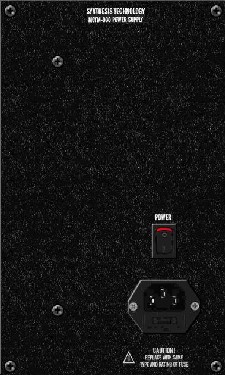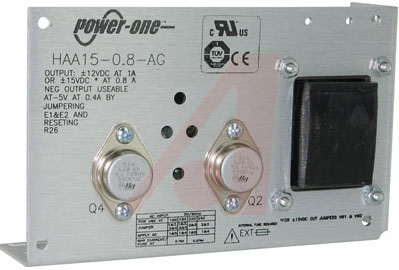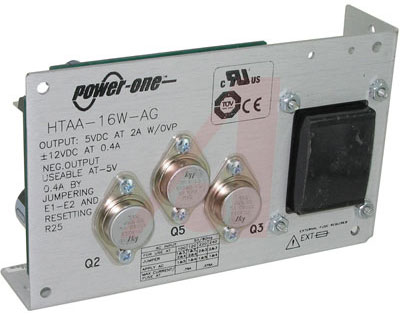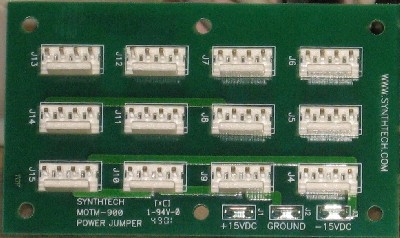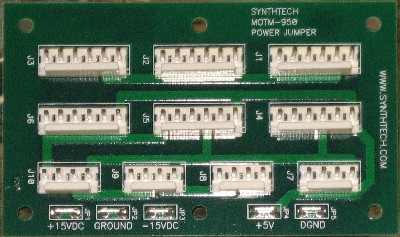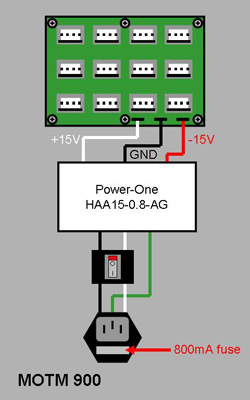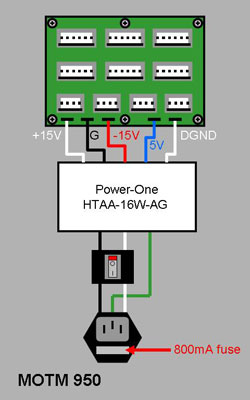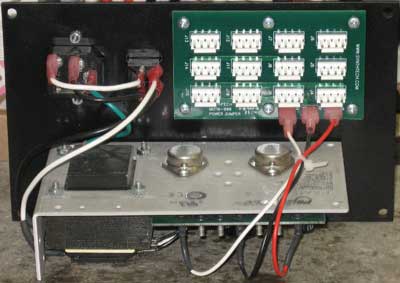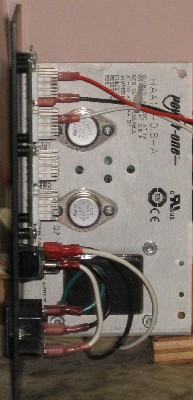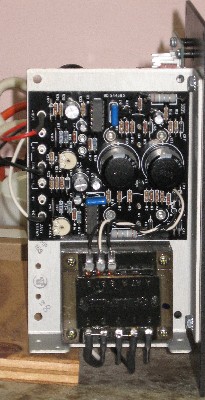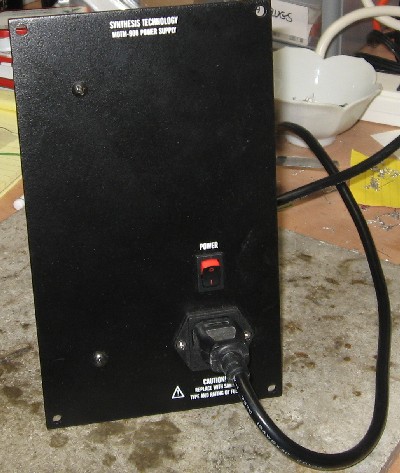Bill and Will's Synth
|
Table of Contents |
|
This page has become really long, so here's a table of contents that we hope will make it easier to traverse: Background - presents an explanation and Paul Schrieber's initial description of the Module with a couple photos from Larry Hendrey Parts - presents a Bill of Materials and notes about it |
Background |
|
Each MOTM900 and MOTM950 has a 3-unit panel that beautifully supports the power supply stuff - the plug & fuse unit, the switch, a Power-One power supply gadget, and the power-supply distribution board. Here's what Paul says about the 900: "The MOTM-900 is a 3U wide, low-noise linear supply that accepts AC line inputs from 100 to 240VAC 50/60Hz (jumper selected) and outputs +-15VDC at 800ma. The easy-to-change fuseholder accepts standard 5mm x 20mm fuses. Instead of noisy 3-terminal regulators, the MOTM-900 uses a 723-based design, using a pre-assembled and tested Power-One supply. This makes assembly of the kit fast and almost fool-proof. "Each MOTM module uses a 4-pin connector called an MTA-156. These are "industry standard" connectors that have been in use for over 20 years. The MOTM-900 contains a special pc board that has 12 individual MTA male connectors. A 4-conductor, 18ga wire harness (part number PWR-20, included with each kit) connects the module to the MOTM-900. In this manner, a "star" power distribution scheme is used for lowest noise and avoiding ground loops. "Specifications for the supply include:
"Since the average MOTM module draws 20ma from each supply, at 65% rated capacity (to keep the heat down) the MOTM-900 can power over 20 modules. An additional power distribution board can be purchased (see the catalog) to supply over 12 modules. "In the past, "homebuilt" synthesizers with 3-terminal regulators have suffered from noise, hum, and crosstalk. The MOTM-900 design and power distribution system eliminates these problems, and will provide years of trouble-free service. Paul doesn't have a schpiel about the 950 on his site. Here's our rap: Each MOTM900 and MOTM950 has a 3-unit panel that beautifully supports the power supply stuff - the plug & fuse unit, the switch, a Power-One power supply gadget, and the power-supply distribution board. The 900 has an HAA15-0.8-AG dual Power-One (click here for ,pdf spec sheet) that provides .8 Amps (800 milliAmps) of +/-15Volts DC. Each 950 has an HTAA-16W-AG triple Power-One (Click here for .pdf spec sheet) that provides .4 Amps (400mA) of +/- 15V DC and also 2 Amps (2000 mA) of +5V DC. The 900 power distribution board has twelve .156 MTA four-pin headers. The 950 has .156 six-pin headers and .156 MTA four-pin headers. And here are diagrams of how the components go together: |
|
Construction |
Set up / Testing |
Use Notes |
|
|
|
The fine Print: Use this site at your own risk. We are self-proclaimed idiots and any use of this site and any materials presented herein should be taken with a grain of Kosher salt. If the info is useful - more's the better. Bill and Will © 2005-2011 all frilling rights reserved
|
